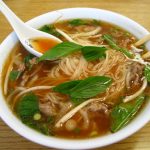Too much sugar is unsuitable for diabetes, obesity, or cardiovascular diseases. So how can you limit your consumption?
Too much sugar can lead to serious health problems. Diabetes, obesity, and cardiovascular disease are all significant concerns for people who consume too much sugar. While it is essential to enjoy sweet foods in moderation, there are several ways to limit your consumption. One way is to avoid processed foods and drinks with high sugar levels. Instead, opt for fresh fruits and vegetables or whole-grain snacks.
You can also limit the sugar you use in recipes by substituting other ingredients, such as honey or fruit juice. By making minor changes to your diet, you can help keep your sugar intake under control and reduce your risk of severe health problems.
Consuming too much sugar can have serious health consequences. Diabetes, obesity, and cardiovascular disease are all linked to high sugar intake, so it’s essential to be aware of how much sugar you eat. There are a few simple ways to limit your sugar consumption. First, avoid sugary drinks like soda and fruit juice. Second, watch out for hidden sugars in processed foods. Finally, could you read labels carefully and be on the lookout for sugar listed under different names, such as corn syrup or honey?
Finally, limit your intake of sweets and other treats. Enjoy them in moderation and balance them out with healthy foods. By following these simple tips, you can help protect your health and avoid the adverse effects of too much sugar.
When you eat foods containing sugar, your digestive system breaks down all the disaccharides into monosaccharides and then absorbs them into the bloodstream. Once in your blood, these simple sugars are available for your cells to use for energy.
Your body prefers to use glucose for energy but can also use fructose and galactose. All three of these simple sugars are metabolized differently in your body. Sucrose is a disaccharide comprising one glucose molecule chemically bonded to one fructose molecule. When you eat sucrose, it is split into its parts by enzymes in your small intestine, and absorption occurs. Lactose is a disaccharide comprising one molecule of glucose chemically bonded to one galactose molecule.
Maltose is a disaccharide comprising two molecules of glucose chemically bonded together. Like sucrose, when you eat maltose, enzymes in your small intestine split it into its parts before absorption can occur.
Our bodies are incredibly efficient at storing complex sugars. They can be used for a variety of purposes. For example, complex sugars can help us stay warm in cold weather. They can also prevent us from getting hungry between meals. Complex sugars are essential to a healthy diet, and we should include them in our daily food intake. Thanks for tuning in, and I hope you have a great day!
While sugar is a necessary part of our diet, we consume too much. On average, we consume over 25 grams of sugar per day, well above the recommended amount by the World Health Organization. However, there are many ways to avoid consuming too much sugar.
The first step is to be aware of how much sugar we eat. This can be tricky, as sugar is often hidden in processed foods. To ensure we are within the recommended amount, we should focus on eating whole foods and limiting processed foods. We should also be careful about drinking sugary beverages, as they contain a lot of sugar.
Finally, we should check food labels to see how much sugar is in a product before we buy it. By following these tips, we can avoid consuming too much sugar and stay healthy.
Count the sugar consumed each day and set a limit
It’s no secret that sugar is everywhere. And, while a bit of sugar here and there probably won’t hurt you, overeating sugar can have serious consequences. That’s why it’s essential to be aware of the amount of sugar you consume daily and set a limit.
Sugar is often hidden in processed foods, so even if you’re not eating sweets, you may consume more sugar than you realize. Please pay close attention to food labels, and be sure to limit yourself to no more than six teaspoons of sugar each day. By being mindful of your sugar intake, you can help keep your weight in check, avoid cavities and other dental problems, and lower your risk for heart disease.
Identify all the forms of sugar consumed daily
Most people know that candy, cookies, and cakes are full of sugar. But sugar also hides in many common foods, such as bread, peanut butter, and tomato sauce. The average person consumes about 22 teaspoons of sugar daily, most hidden in processed foods.
Consuming too much sugar can lead to weight gain, cavities, and even heart disease. That’s why it’s essential to be aware of all the forms of sugar that you’re consuming. By reading labels and making smart choices at the grocery store, you can help control your sugar intake.
And remember, moderation is key – a little sugar isn’t going to hurt you, but too much can be dangerous. So next time you reach for that muffin or slice of pie, think about how much sugar you’re getting – and whether it’s worth it.
Know how to read labels to identify the false names of sugar (corn syrup, molasses, syrup, corn sweetener, etc.)
You might be surprised to learn that sugar has many different names—more than 50! And while you might think that these other names correspond to different types of sugar, they all refer to the same thing: a sweet, white, crystalline substance derived from cane or beet juice. Unfortunately, sugar is often added to processed foods to make them taste better. This can be problematic for people trying to limit their sugar intake for health reasons.
Learning to read labels is one way to avoid consuming too much sugar. Many processed foods contain sugar, often listed under one of its many different names. For instance, you might see “corn syrup” or “molasses” listed as an ingredient. Other common names for sugar include “syrup,” “corn sweetener,” and “sucrose.” By familiarizing yourself with these different names, you can ensure you are not consuming more sugar than you want.
Cook your meals to avoid the hidden sugars in pre-cooked meals
Hidden sugars are sneaky. You may need to realize how much sugar is added to packaged and pre-cooked meals. Did you know a can of soup can have up to six teaspoons of sugar? Or can a single serving of pasta sauce contain up to four teaspoons of sugar? The problem with hidden sugars is that they add up quickly. If you’re not careful, you could easily consume more sugar than you realize. And that’s not good for your health.
Consuming too much sugar can lead to weight gain, increased blood sugar levels, and an increased risk of heart disease. So how can you avoid hidden sugars? The best way is to cook your meals from scratch. That way, you know exactly what’s going into your food. And you can control the amount of sugar you consume. So next time you’re tempted to reach for a quick and easy meal, remember that cooking from scratch is always the best option for your health.
Instead of using refined sugar, use natural fruit sugar
Many people are trying to cut down on their sugar intake these days. And for a good reason. Research has shown that sugar can contribute to various health problems, including obesity, type 2 diabetes, and heart disease. But it can be hard to give up sweet treats entirely.
Luckily, some natural alternatives can satisfy your sweet tooth without all the adverse health effects. One such alternative is fruit sugar. Fruit sugar is naturally occurring sucrose that is found in fruits and vegetables. Unlike refined sugar, it does not cause spikes in blood sugar levels. Additionally, fruit sugar contains nutrients and fiber that are beneficial for health. So next time you’re looking for a sweet treat, reach for a piece of fruit instead of a candy bar. Your body will thank you for it!
Eliminate from your diet foods where sugar is predominant
Most people know that overeating sugar can lead to weight gain, but few realize the other health risks of this common ingredient. Sugar is not only empty calories, but it can also harm your mood, energy levels, and overall health.
While it may be difficult to eliminate sugar from your diet, it is essential to be aware of the foods where sugar is predominant. This includes sweetened beverages, processed snacks, and desserts. By making small changes in your diet, you can help to improve your health and reduce your risk of developing chronic diseases.
If you are serious about cutting down on your sugar intake, start by looking at the foods you eat daily. First, count how many teaspoons of sugar you consume, then set a limit for yourself.
Be aware of all the different forms of sugar in processed foods, and learn to read labels to avoid them. When cooking meals from scratch, use natural sweeteners like fruit instead of refined white sugar.
Finally, remove any food from your diet where sugar is the predominant ingredient. With a little effort, you can dramatically reduce the amount of sugar in your diet – and see some fantastic health benefits as a result!









